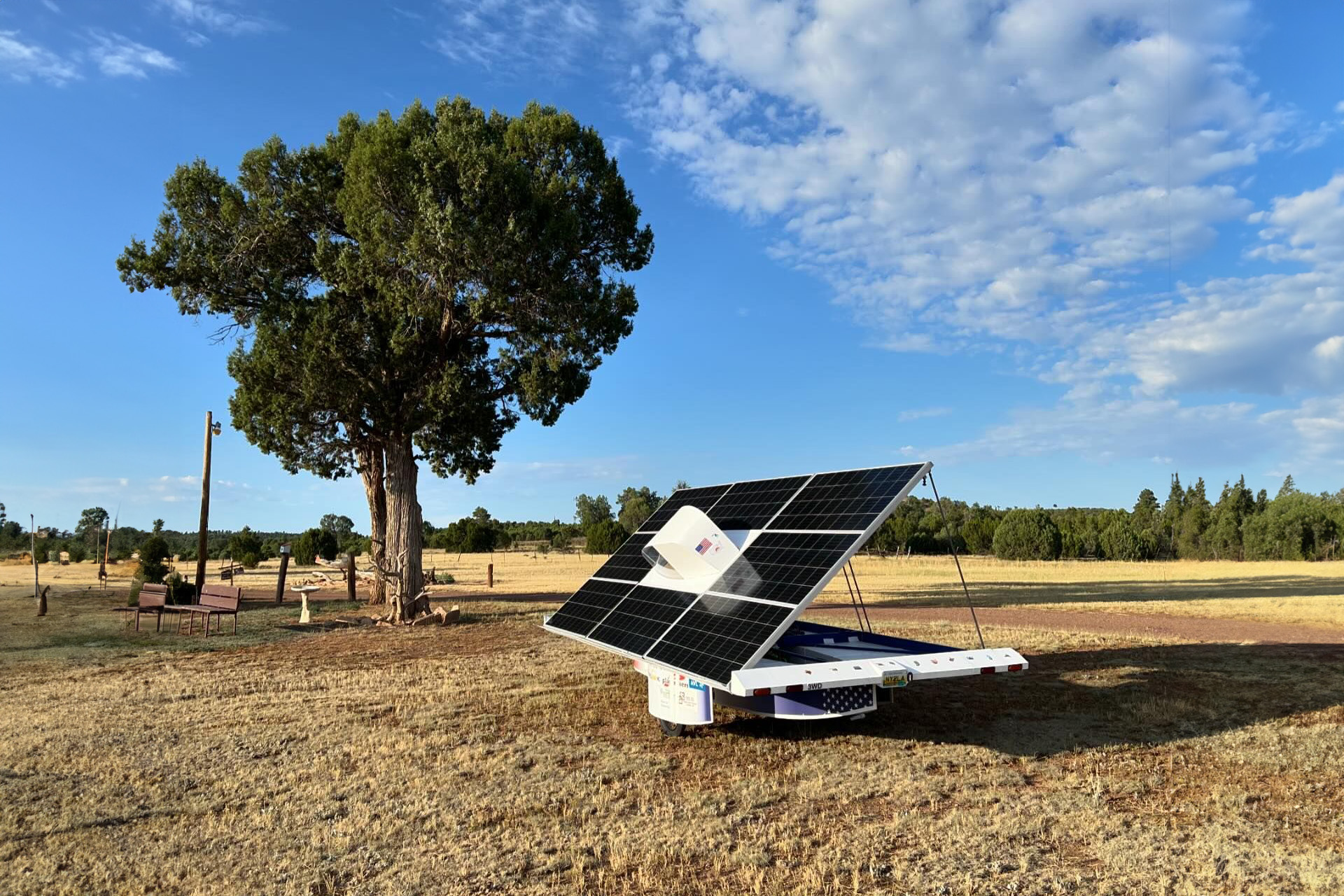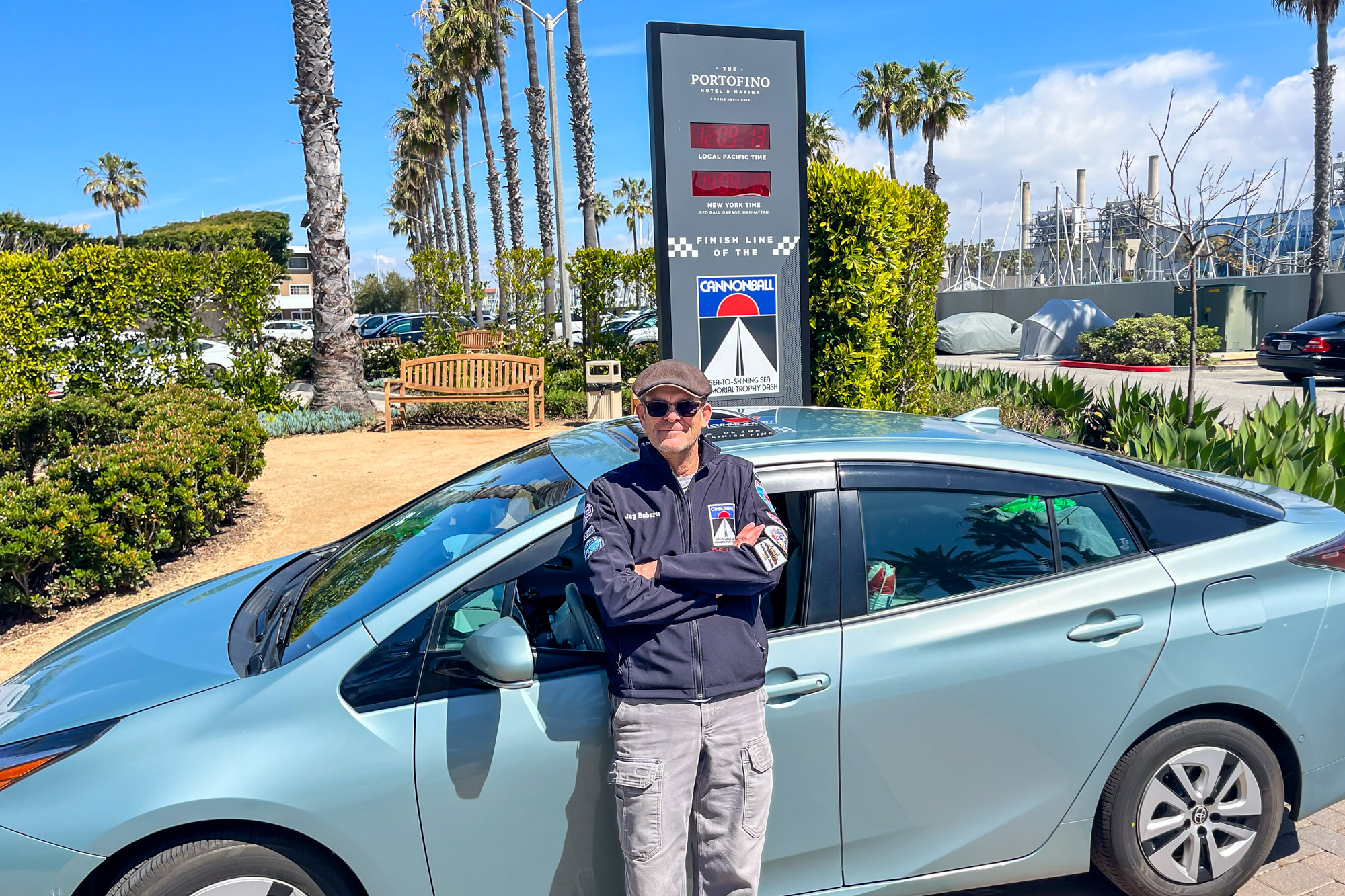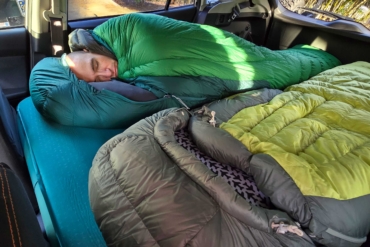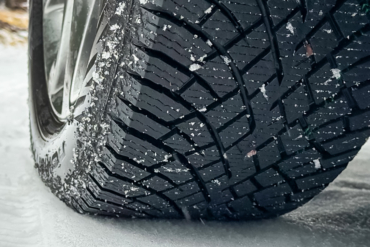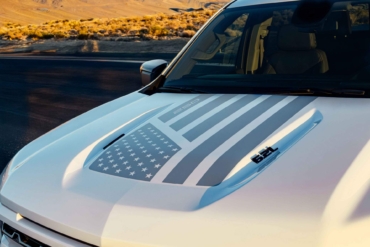Imagine driving across the country without any fuel and without a plug. Five adventurers just did exactly that. They tackled the legendary Cannonball endurance test from coast to coast using only the power of the sun, as well as a lot of patience and ingenuity.
We spoke with team members Kyle Samluk and Danny Ezzo as they were on their long cross-country drive home. They were driving at highway speeds for the first time in weeks because their custom-built solar car was now in the trailer.
The idea, like so many adventure ideas both good and bad, started during pandemic lockdowns. Samluk told us that he and Will Jones had built a solar-powered car for a national high school competition a few years prior.
“But then Covid happened, and we had a little bit of free time on our hands,” Samluk said, and Jones brought up the car again. “I think it would be cool to do a Cannonball Run.”
What’s a Cannonball?
A Cannonball Run is a race from the Red Ball Garage in New York to the Portofino Inn in Redondo Beach, Calif. The event is named for Erwin George “Cannon Ball” Baker, who spent years driving from coast to coast and set a cross-country driving speed record back in 1933.
The name was first used on an unsanctioned road race back in 1971, and the idea of it became so embedded in American culture that there was a Cannonball Run movie in 1981.
Sun Strider Solar Car
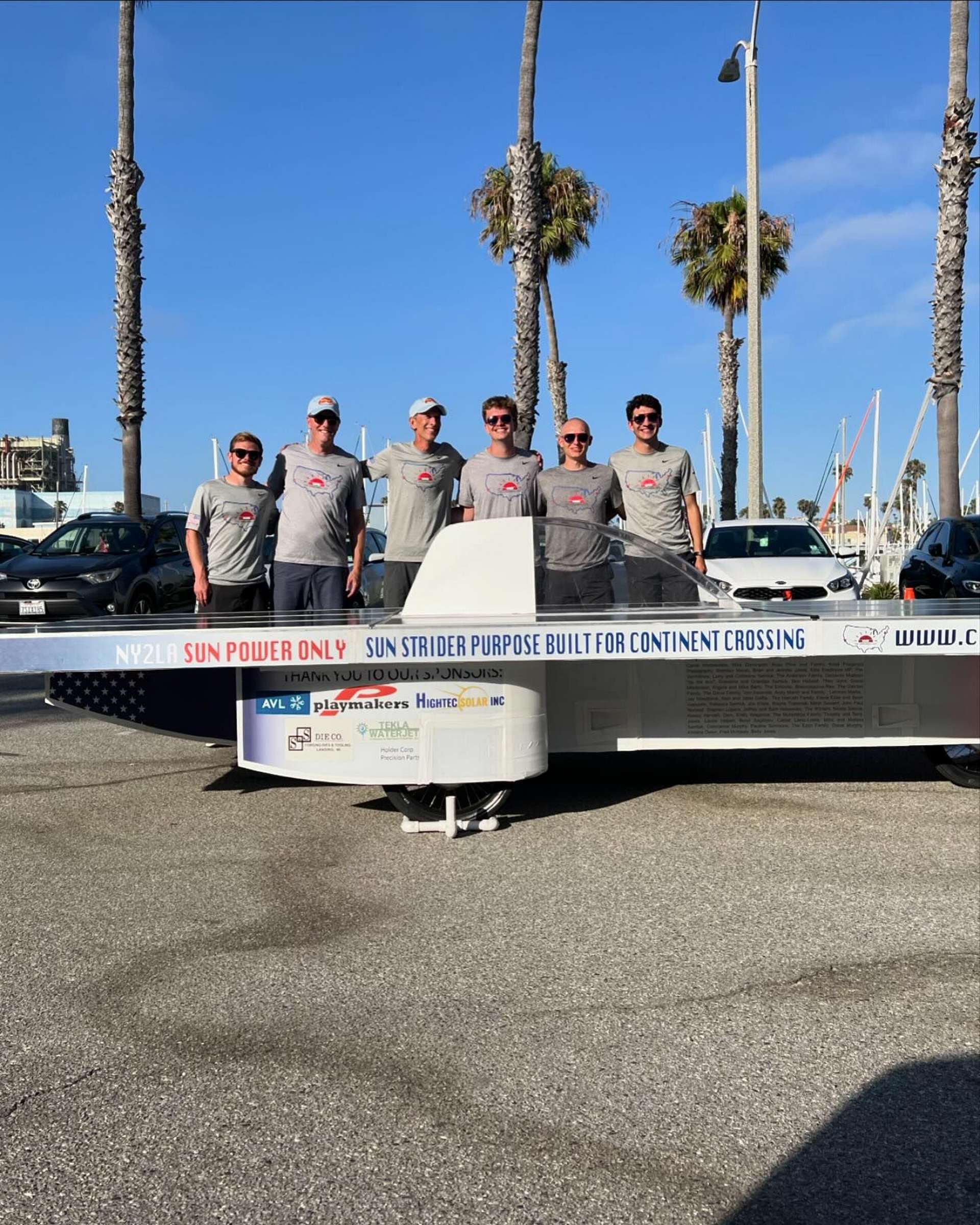
The team designed and built the Sun Strider solar car specifically for this challenge. It uses three electric motors from Grin, one powering each wheel.
Like the motors, many of the parts used are off-the-shelf components meant for bikes and e-bikes. The parts are available, efficient, and light, which helped keep the empty car under 600 pounds.
A 3kWh, 72V battery pack holds and accepts the charge from the solar cells. It then delivers the power to the motors. Unlike cars designed for high school and university solar competitions, the Sun Strider didn’t have a limit on how many cells it could use or how much power it could store.
How were they able to register it? Michigan allows hand-built vehicles to be registered, said Samluk. Though he thought the rules were meant more for wrecked car repairs or hot rods, they covered the solar vehicle, which is also technically a motorcycle. Once it had a VIN and Michigan registration, it was good to go in all 50 states.
Samluk said the car could take enough energy from the sun to maintain 40 mph on a flat road. The top speed was 50, and the minimum speed was much lower, especially when crossing the Appalachians and the Rockies.
Solar Cannonball Attempt 1
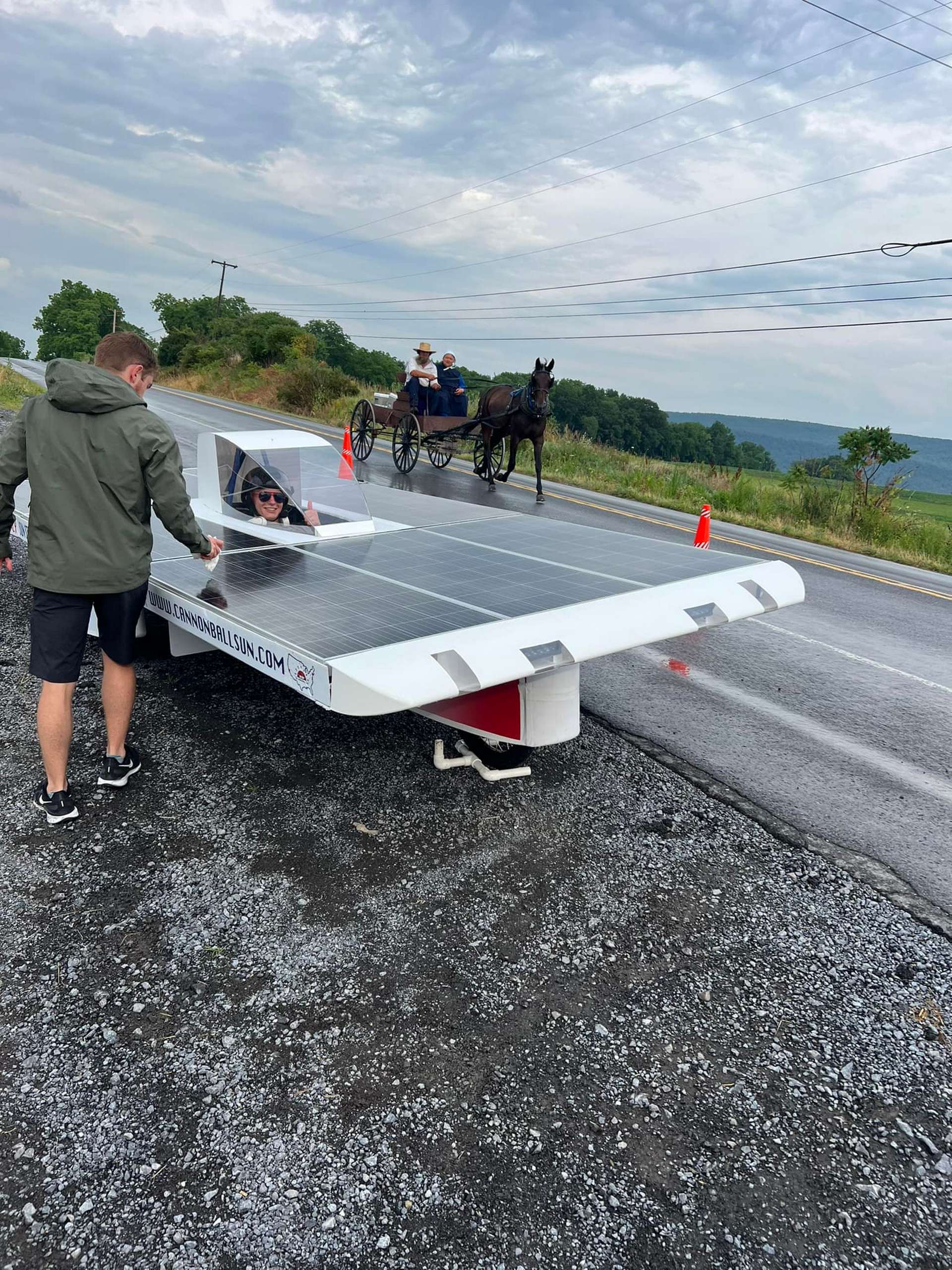
This Cannonball would be different than the norm, as it wouldn’t break a speed limit anywhere in the country. “We got pulled over” on the record run, said team member Danny Ezzo, “but it was actually for the opposite. The police officer told us that we should speed up. Because we were holding up traffic.”
The team coined the Cannonball Sun name in recognition of its solar-powered attempt. The car and team were assembled and prepped for the record run in June 2021. They set off with high hopes, but only managed 768 miles in total.
Sadly, the attempt to cross the country died in rural Indiana due to an undiagnosable electronics failure.
2.5 Years to Get Ready for a Second Attempt
But after that failed attempt, the team wasn’t ready to give up. Instead, they spent 2.5 years improving and refining the car. Solving issues, completing extensive test drives, and ensuring the car could make the cross-country trip on attempt number two.
The Sun Strider set off from Manhattan at 4 a.m. on July 8, 2024, bound for the Pacific. Normally, the team would drive from dawn to dusk, but this morning, they got an early start to help avoid NYC traffic.
“Usually, around 6 am, we hit the road,” said Samluk. “We would drive for a little bit, then, after an hour or so, we would stop and charge the car.” The team would angle the car and lift the top to catch the most sun possible. They would repeat that for the rest of the day, and repeat that cycle for 2 weeks.
Flat Tires & Rain Don’t Stop the Run
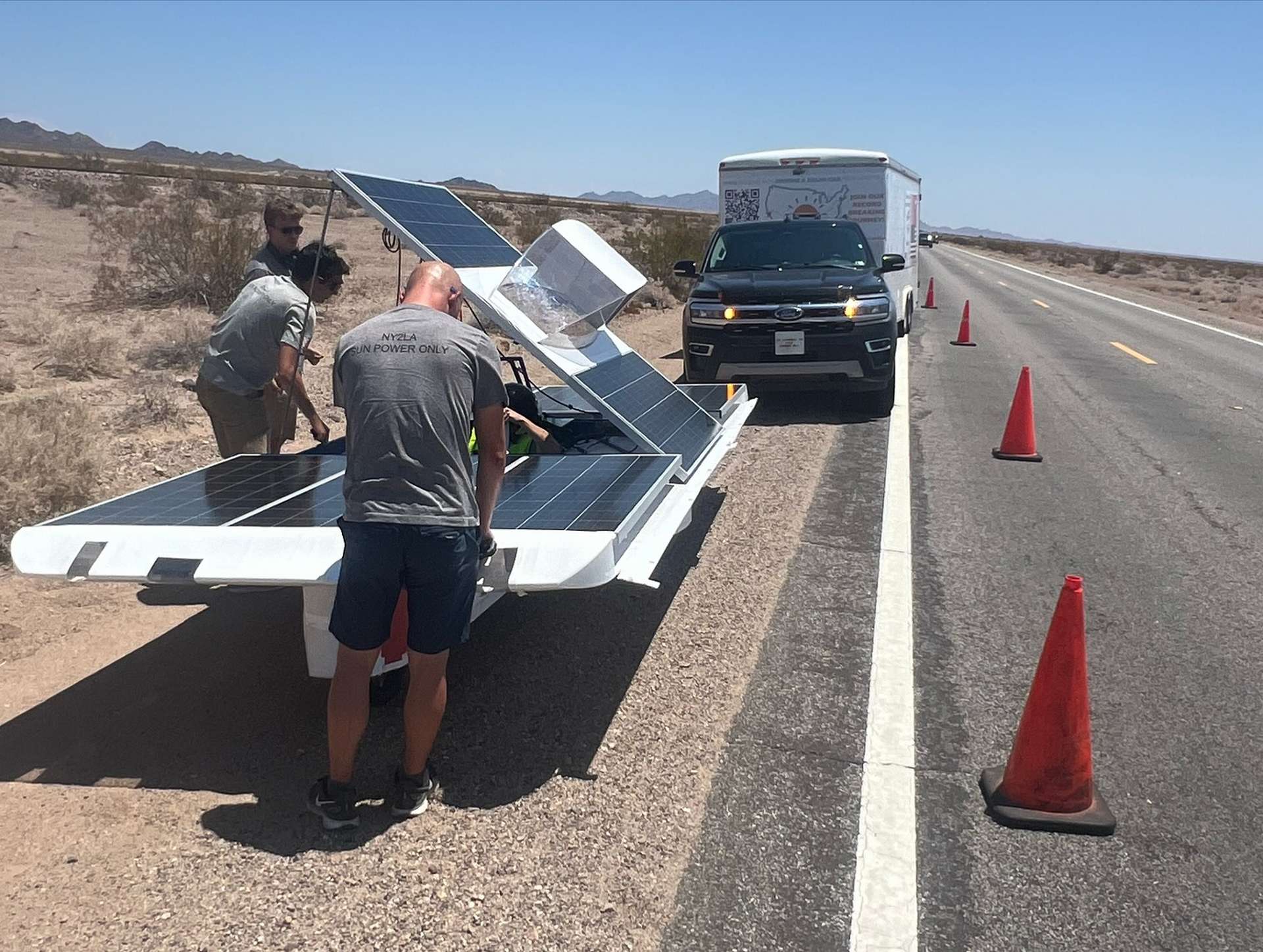
Day one brought two flat tires, some wiring issues, and a sudden rainstorm. The team’s clever design let them swap a tire by removing the entire axle and popping a new one in, so they were still able to cover 246 miles. It was a new single-day record for the team, though they would beat it several times on this trip.
For the next few days, the team dodged the remains of Hurricane Beryl and a few other major storm systems. Solar and rain are not partners, nor are tiny cars with bicycle tires and deep-standing water. Rain limited the team to just 106 miles on a particularly wet day.
On day five, the team passed the point where the first attempt failed and broke the 1,000-mile barrier. Day seven and the flat expanse of Kansas led to a new record of 282 miles.
When temperatures hit the triple digits, the team members were ready with ice vests and more frequent driver changes — there is no air conditioning in a solar car. They were also forced to adapt their driving to keep the motors cool and prevent overheating.
Day seven started with a noise in the suspension. The quick fix was to replace the motors and suspension on all three wheels. The clever design let them swap them all out and still cover 242 miles.
Western Mountains Are Hard on Parts
On day 11, the team started to enter the mountains of New Mexico and Arizona. The hills cut into range, but Samluk said that the Rockies weren’t as bad as the eastern hills because the climbs were shorter and matched with downhills. But the steep downhills and sharper corners were harder on the car.
New Mexico brought an axle that had seized into a motor, preventing quick tire changes. “We brought along a MIG welder,” Ezzo said. So when they needed to change out that motor, “we had to weld (the car) in this downtown area.”
Ezzo called this one of the great challenges of the event. “It was a great challenge for all of us. To be super creative and think out of the box. How to fix this problem in this small town in the middle of New Mexico.”
Day 12 saw so much heat that the car’s nose cone lost its shape. “We were doing quick driver shifts” said Samluk. “Under an hour each.”
“As long as you kept moving, it wasn’t too bad,” he said. “The hardest part was when you hit big cities, like Phoenix. You just didn’t quite get as much airflow in the stop-and-go traffic.”
Day 13, the last full day of the trip, might have also been the worst. A key electronic part failed, and they had to diagnose and then swap it at the side of the road in the Mojave desert. In 116-degree heat. Not only did they lose 90 minutes to repairs, but the failure meant that they couldn’t charge during the day’s best sun.
Day 14: Redondo Beach & the End of an Adventure
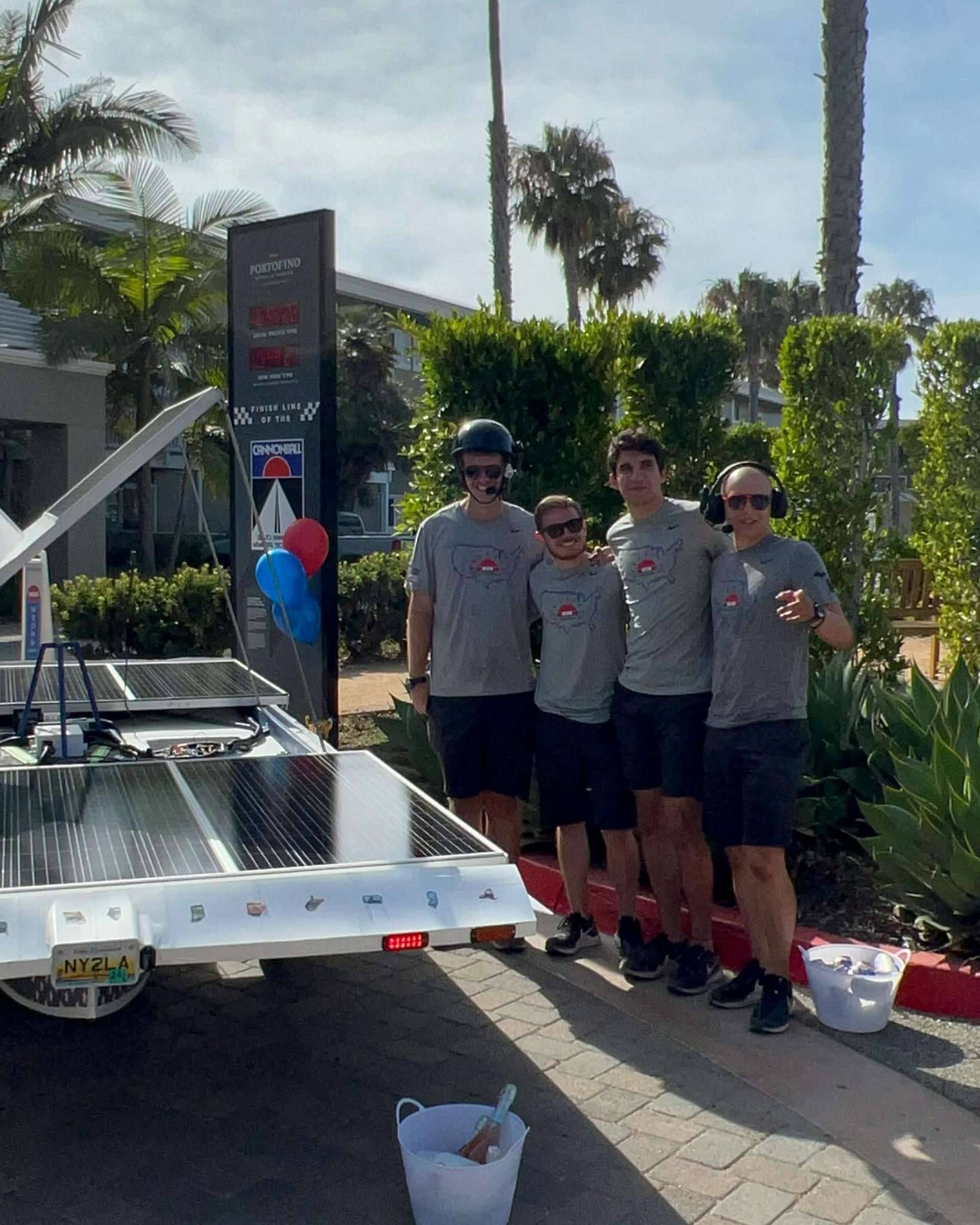
But then, the last day. They set off from Yucca Valley and headed for Los Angeles. They made it, setting a new Cannonball run solar-powered record on July 21, 2024, at 4:42 p.m. PT: 13 days, 15 hours, 19 minutes. The previous record, and only other known Cannonball solar attempt, took 57 days.
“Would we do it again?” Samluk asked. “I think the trip was really difficult, but it was a lot of fun. Definitely grueling but pretty rewarding. But to get me to do it again? Somebody would have to beat our time.”
“I’m honestly hoping (someone) will make the attempt in the next two or three years. Maybe more people will get into it,” he said. That sounds like a yes to another Cannonball Sun attempt.
What’s next in the short term? Kyle Samluk and Brett Cesar are recent engineering grads with work lined up. Danny Ezzo and Will Jones are about to enter their final year of engineering school at Michigan Tech and the University of Michigan, respectively.
